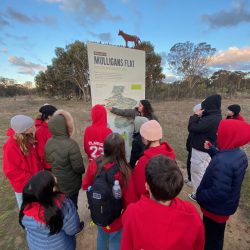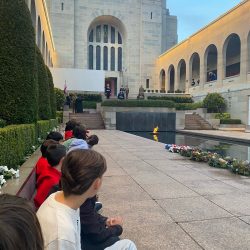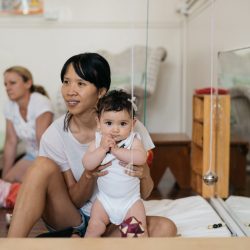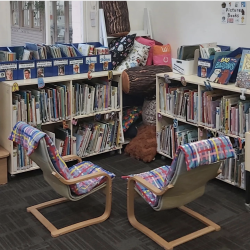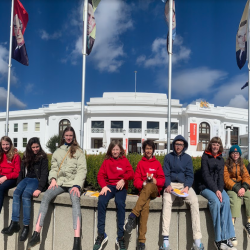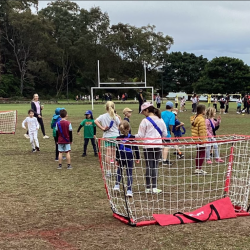Maria Montessori

Maria Montessori was born in Italy in 1870 to a well-educated mother and a civil servant father.
Intelligent and headstrong, the young Maria insisted upon going to a boys’ technical school in order to study the sciences and become an engineer.
By 20, she had done so well at her studies that she secured a place at the University of Rome and had changed her chosen academic path to medicine. This was against the wishes of her parents, and initially the medical school itself. It generated hostility and horror among the male medical students, who felt the presence of a woman brought the profession into disrepute. At this time it was considered inappropriate for women and men to be in the same room before a naked body, so Maria Montessori was excluded from some lessons and forced to catch up by studying at night alone in the morgue.

At one point, she reportedly became disheartened and on the verge of giving up her studies, but an encounter with an impoverished child in the street stirred her curiosity and she resolved to go on. The child, who had no shoes, was playing with a simple piece of paper – totally engrossed in its movement. What confounded the young Maria Montessori was how a child with so little, could be completely focused on the paper when his circumstances were so miserable. This simple scene is thought to be the seed from which sprang a revolution in education that swept the globe and continues to influence modern-day schooling.
In 1896, Maria Montessori became the first woman to graduate as a doctor from her college at the University of Rome. This was also the year that she represented Italy at the International Congress for Women’s Rights in Berlin where she gave a speech arguing for equal pay with men. She published medical papers, worked as a doctor and as a lecturer.
While working at a psychiatric clinic in Rome her interest in children really took hold. At the age of 28, she accepted a position as the Co-Director of a school for “unhappy little ones”. Dr Montessori referred to them as ‘mentally disabled children.’ At this time she began a love affair with her Co-Director, Giuseppe Montesano, but the pair didn’t marry. Had they done so, Montessori would have had to give up work, but she did give birth to a son, Mario.
This would have been an outright scandal at the time, and Mario was given to a family to bring up. Maria Montessori visited him regularly, and when he later discovered that she was his mother they reunited on a permanent basis and later worked together promoting Montessori education around the world.
Dr Montessori spent countless hours observing and working with the children at her clinic. Under her guidance, some children who had been considered uneducable before she began testing her theories, passed a standardised test common among “normal” children. She was proclaimed a miracle worker by the educational establishment.
Though heartened by the results she’d achieved with special needs children, Dr Montessori was appalled at the test results of children who did have all their mental faculties. In her 30s, while working as a doctor and a university lecturer, she undertook postgraduate study in anthropology and psychology, and later became a professor of anthropology.
In 1907 at the age of 35, she was given another chance to try out her theories when she was invited to take over the education of 50 “filthy and ragged children” from the San Lorenzo slums of Rome. The techniques Dr Montessori continued to refine as she studied and worked with these children were so successful that her Casa dei Bambini – or Children’s House – began to receive international attention. Visitors came from all over the world to see these children – and their remarkable progress – for themselves.
In 1909 Montessori published a book “The Montessori Method,” and opened a training centre for Montessori teachers. By 1912 this book had been translated into English and her innovative and revolutionary educational philosophy became recognised and applauded by such intellectual lights of the time as Alexander Graham Bell, Thomas Edison and Sigmund Freud.
Confronted by the horrors of World War 1, Montessori drew a connection between education and pacifism.
“Whatever be our political or religious affiliations, we are all near to the child and we all love him. It is from this love that comes the child’s power for unity.“ Maria Montessori, The Absorbent Mind
Dr Montessori’s fame spread further at the 1918 Panama-Pacific International Exposition in San Francisco. A special classroom was built at the exhibition with one glass wall behind which spectators could sit and watch as she worked with 20 children, none of whom were familiar with the “Montessori environment” as it was already coming to be called. The four-month long demonstration project did much to popularise Dr Montessori’s teaching techniques on an international level. With each book she released and each speech she delivered, her popularity grew among parents and educators.
After the war, Dr Montessori returned to Italy and her schools flourished with the support of Mussolini. But this relationship soured, and when Dr Montessori refused to swear allegiance to fascism she was forced to flee the country for the Netherlands.
Mussolini closed her schools, as did Hitler later in Germany.
In 1939, Dr Montessori flew to India, where Ghandi was looking for an education system that would suit a largely impoverished and illiterate population.
But when Italy joined Germany in the war in 1940, Dr Montessori and her son, Mario, instantly became ‘enemy aliens’ in the British-ruled India. Though briefly held under house arrest, Dr Montessori was later allowed to travel, train Montessori teachers and establish new schools.
She returned to Europe in 1946 and began to re-establish Montessori schools. A year later she addressed UNESCO on the theme of Education and Peace and in 1949, she was nominated for the Nobel Prize in Peace.
Since the early 1920’s, interest in the Montessori method has grown steadily throughout the world. The Association Montessori Internationale, AMI, founded by Maria Montessori in 1929, maintains Montessori educational principles and promotes Montessori education worldwide.
Dr Montessori died in 1952, aged 81 in the Netherlands.


